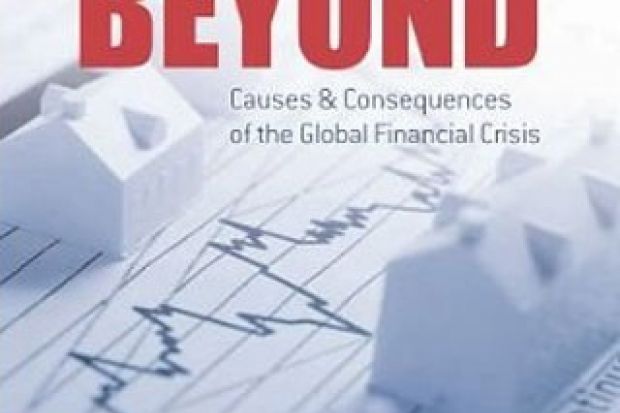The journalist Martin Wolf once likened attempts to assess the financial crisis to the old saw about examining an elephant in the dark: one person feels around, finds the trunk and wrongly identifies it as a snake; another discovers four legs and pronounces it a rhino; yet another finds just one leg and mistakes it for a tree trunk. Similarly, the financial crisis has been identified as many things: excesses in banking, the mismanagement of risk, a housing bubble, boom and bust driven by low interest rates, and a global imbalance. No single explanation, however, is enough to understand the full gravity of what has happened. While books on the crisis are now numerous – bad times for the economy are good times for sales of pop-economics titles – Andrew Farlow’s book is rare in showing how these various factors interacted to create the gravest situation faced by the global economy since the Great Depression that followed the crash of 1929.
However, rather than just connecting the usual stream of explanations, Farlow also highlights one other: rising income inequality in the years preceding the crisis. Low wages in China meant too little spending in the East compared with its newfound and seemingly ever-expanding ability to produce. The solution was for China to lend to the US, giving the West the means to import the surplus of Chinese goods. The inflow of funds helped to increase the availability of loans and mortgages, pushing up house prices and encouraging Western consumers to take on debt and spend – all in a way that their wage growth (or lack of it) would not allow. Central banks across the world kept interest rates low in an effort to encourage spending to plug the hole of insufficient demand. These low interest rates in turn encouraged financial institutions to search for newfangled products that could deliver higher returns – including the slicing and dicing of (sub-prime) mortgage debt. The lack of oversight meant that the increased riskiness of the financial sector was missed. Furthermore, while house and stock prices were increasing, which by itself could have suggested the economy was overheating, cheap imported goods from China were pushing down prices in shops, acting in the opposite direction; so long as inflation and unemployment were low, many economists and policymakers seemed to think there was nothing to worry about.
Farlow’s focus on the importance of income inequality and deficiency of demand is refreshingly Keynesian in flavour. After experiencing the Great Depression, Keynes argued that leaving markets to their own devices produces instability, not stable growth. Debt might help to create a false illusion of stability in the short term by fuelling spending in times when it would otherwise be lacking, but the more debt builds, the worse the final crash becomes. Free markets certainly have their advantages – but they can also create severe dislocations when left untamed. Rising inequality, the deregulation of financial markets and the failure of states to cooperate to address the deficiency of global demand are all reflections of placing too much faith in free markets. If we are to search for a single underlying cause of the crisis, it is in fact here.
Crash and Beyond does much more than simply consider the causes of the crisis; it also looks to the policy response. It considers what policymakers have got right, who will bear the costs and what needs to be changed. At this point, Farlow sounds alarm bells, arguing that many of the policies that have helped in the short term (such as aiding the banks and the policy of quantitative easing) have created new risks. There may be worse to come.
Five years on from the crisis and our economy is struggling to grow; at this point after the last Great Depression, the UK economy was growing at 4 per cent a year – a striking contrast to today. If we are to return to stable growth, what we need is a revolution in economics akin to the Keynesian one that followed the hard times of the 1930s. However, this time around, we also need to hold on to the lessons and not be fooled into a false sense of security as memories fade. While we all like to take our children on roller coasters at the fairground, the last thing we want to do is send them on an economic roller coaster ride of the magnitude experienced in our own – and in Keynes’ – lifetime.
Crash and Beyond: Causes and Consequences of the Global Financial Crisis
By Andrew Farlow
Oxford University Press, 448pp, £25.00
ISBN 9780199578016
Published 30 May 2013




